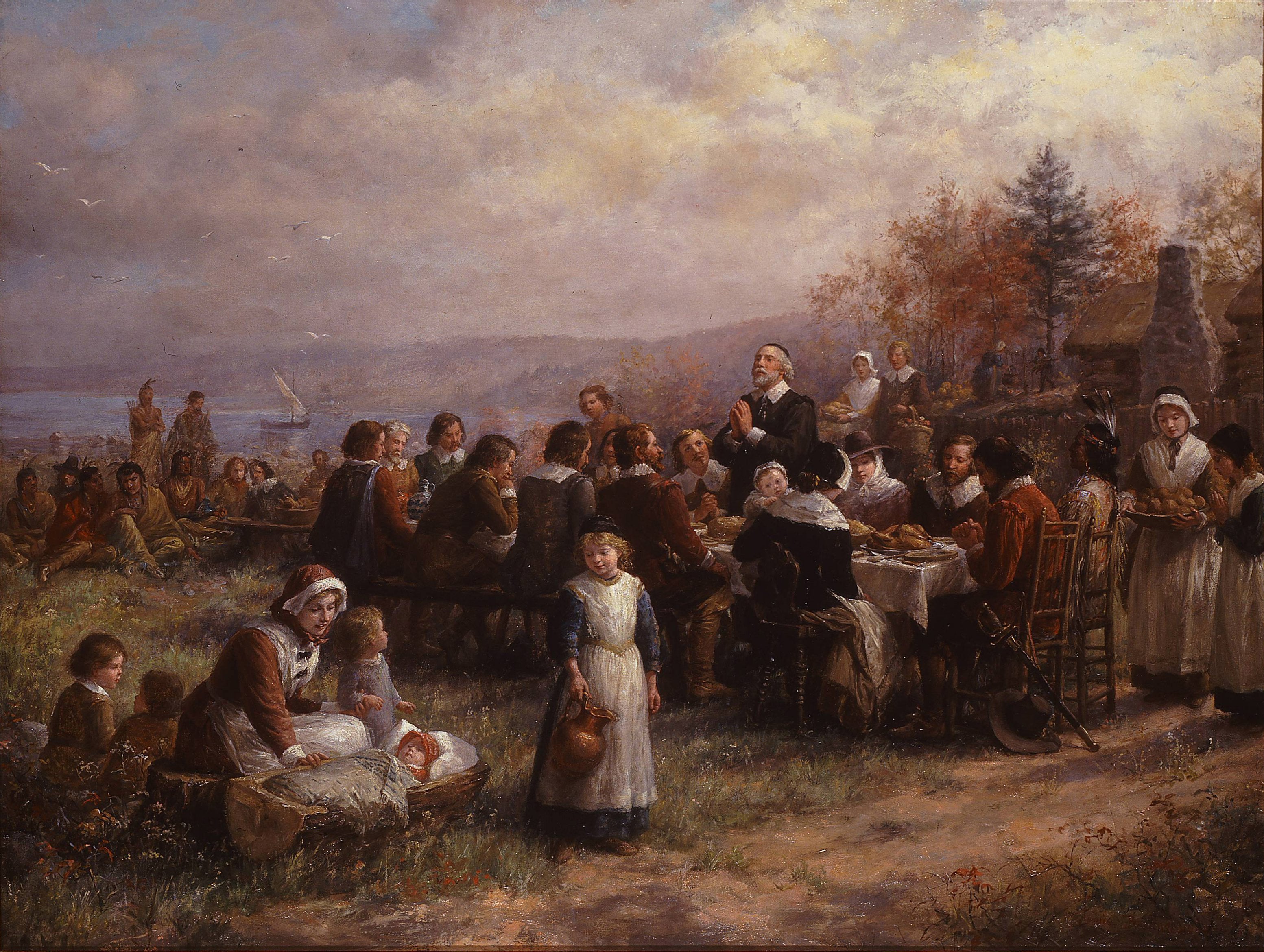
The first American Thanksgiving, 1621
After a particularly harsh first winter in the New World, half of the Plymouth colonists who had come across the Atlantic on the Mayflower perished. To the remaining lot’s great fortune, the Wampanoag natives came to their aid. In the autumn of 1621, remaining colonists and members of the Wampanoag tribe shared a bountiful feast in celebration of the colony’s first successful harvest.
One of few existing first-hand references of the event, provided by colonist Edward Winslow, reads as follows:
So far from want. . .
"And God be praised we had a good increase… Our harvest being gotten in, our governor sent four men on fowling, that so we might after a special manner rejoice together after we had gathered the fruit of our labors. They four in one day killed as much fowl as, with a little help beside, served the company almost a week. At which time, amongst other recreations, we exercised our arms, many of the Indians [SIC] coming amongst us, and among the rest their greatest king Massasoit, with some ninety men, whom for three days we entertained and feasted, and they went out and killed five deer, which they brought to the plantation and bestowed on our governor, and upon the captain and others. And although it be not always so plentiful as it was at this time with us, yet by the goodness of God, we are so far from want that we often wish you partakers of our plenty."
Set in history
In 1623, Plymouth Colony Governor William Bradford famously proclaimed a day of Thanksgiving. It is good to look back and take stock of the first Thanksgiving because every year someone among us is experiencing or understanding Thanksgiving for the first time.
"Inasmuch as the great Father has given us this year an abundant harvest of Indian [SIC] corn, wheat, peas, beans, squashes, and garden vegetables, and has made the forests to abound with game and the sea with fish and clams, and inasmuch as he has protected us from the ravages of the savages, has spared us from pestilence and disease, has granted us freedom to worship God according to the dictates of our own conscience.
Now I, your magistrate, do proclaim that all ye Pilgrims, with your wives and ye little ones, do gather at ye meeting house, on ye hill, between the hours of 9 and 12 in the day time, on Thursday, November 29th, of the year of our Lord one thousand six hundred and twenty-three and the third year since ye Pilgrims landed on ye Pilgrim Rock, there to listen to ye pastor and render thanksgiving to ye Almighty God for all His blessings.
— William Bradford
Ye Governor of Ye Colony"
During Thanksgiving almost 400 years ago, every person in the colony was important, each individual was valued, and everyone worked together for the common good. People contributed their best effort to sustain and protect the colony and all were truly grateful for what they had; values worthy of contemplation as we gather to celebrate our Thanksgiving.

”Thanksgiving at Plymouth”, oil on canvas by Jennie Augusta Brownscombe, 1925, on display at the National Museum of Women in the Arts. Pointedly, the anachronistic Plains Natives' headdresses depicted in her 1914 painting, were not repeated in this, her 1925 painting of that event.
Photo Call!
Send us your pictures of Thanksgiving observations, American flags, flagpoles, ropes, or other accessories! We would be honored to feature your photography in our blog or on Facebook. Remember, photos of damaged flags and accessories are valuable, too.
Do you have suggestions for information you'd like to see here? If so, please send them our way!
Please send all of your suggestions or questions to [email protected]. We want to hear from you!
Have a great day, from your friends at LIBERTY FLAGS, The American Wave®.

